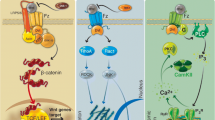Abstract
Neuronal damage in the central nervous system leads to primary cell death, induced directly by the trauma, and delayed secondary death of neurons, the latter depending on environmental changes, lack of metabolic and trophic supply, and altered gene transcription. While primary death of neurons occurring within a short time after trauma is not a realistic target for therapy, secondary cell death might be prevented by new neuroprotective strategies. Although there are increasing data concerning cell rescue after ischemic and traumatic brain injury through the last decade, the mechanisms that underlie secondary death of neurons following lesion are still incompletely understood and are now the subject of a more detailed investigation. In this review, we want to give an overview on what is known about the molecular mechanisms of delayed ischemic and traumatic neuronal death in vivo and about promising neuroprotective treatment strategies that might be of future clinical relevance or have already entered clinical trials.
Similar content being viewed by others
Author information
Authors and Affiliations
Additional information
Received: 13 January 1999 / Accepted: 8 April 1999
Rights and permissions
About this article
Cite this article
Kermer, P., Klöcker, N. & Bähr, M. Neuronal death after brain injury . Cell Tissue Res 298, 383–395 (1999). https://doi.org/10.1007/s004410050061
Issue Date:
DOI: https://doi.org/10.1007/s004410050061




